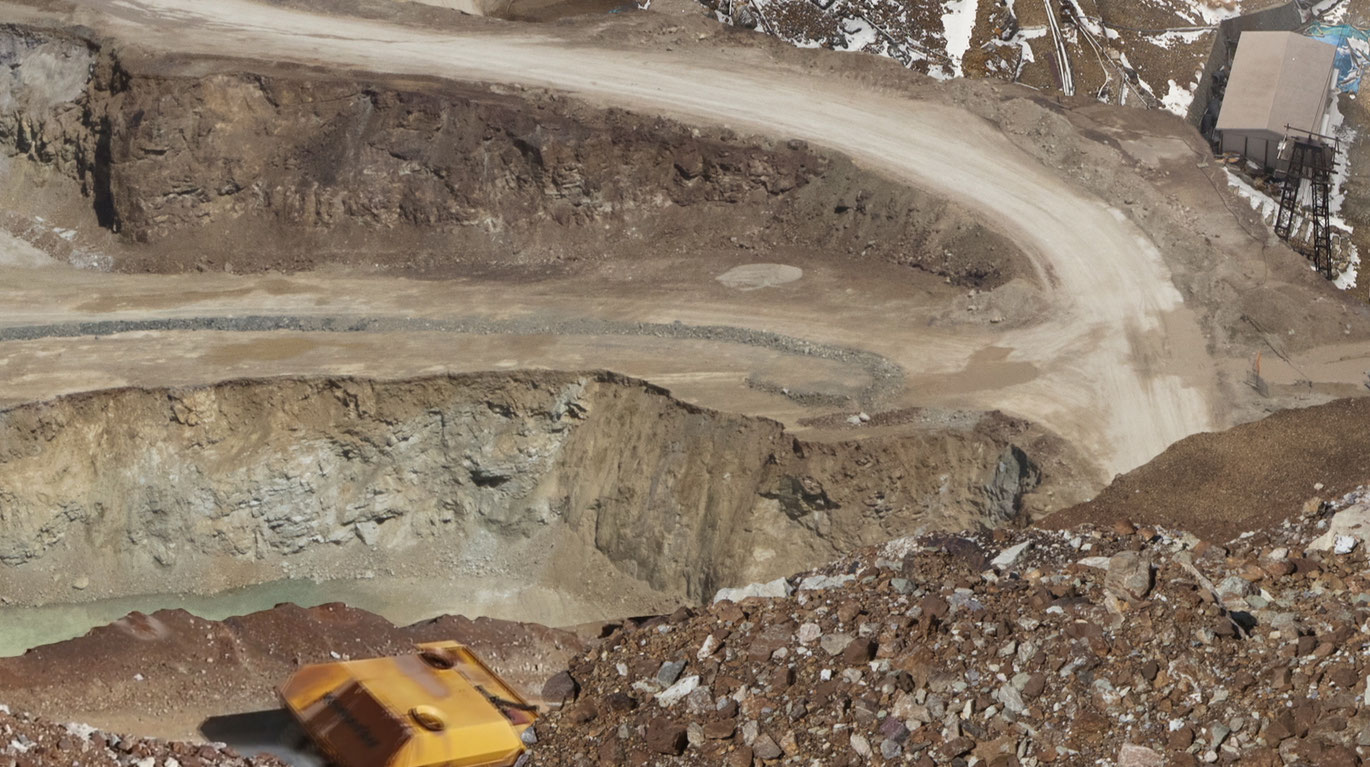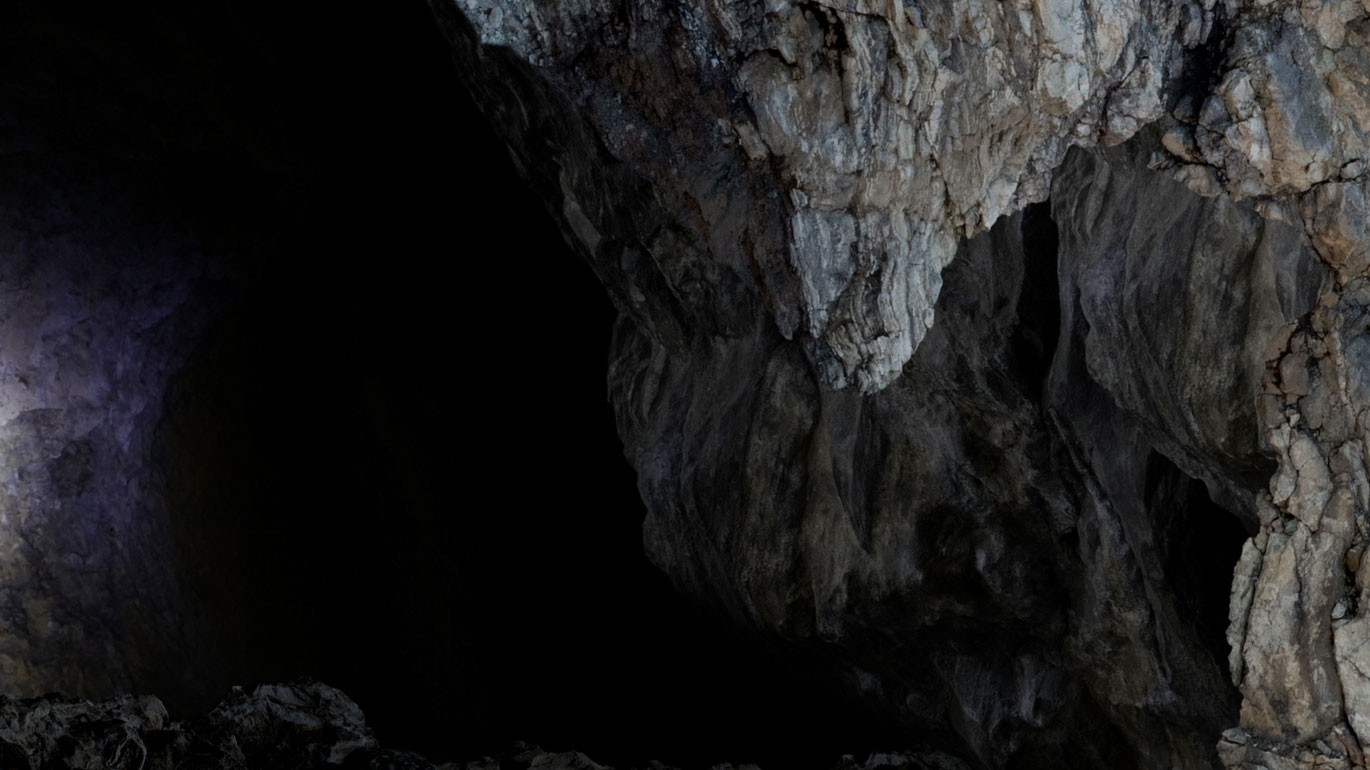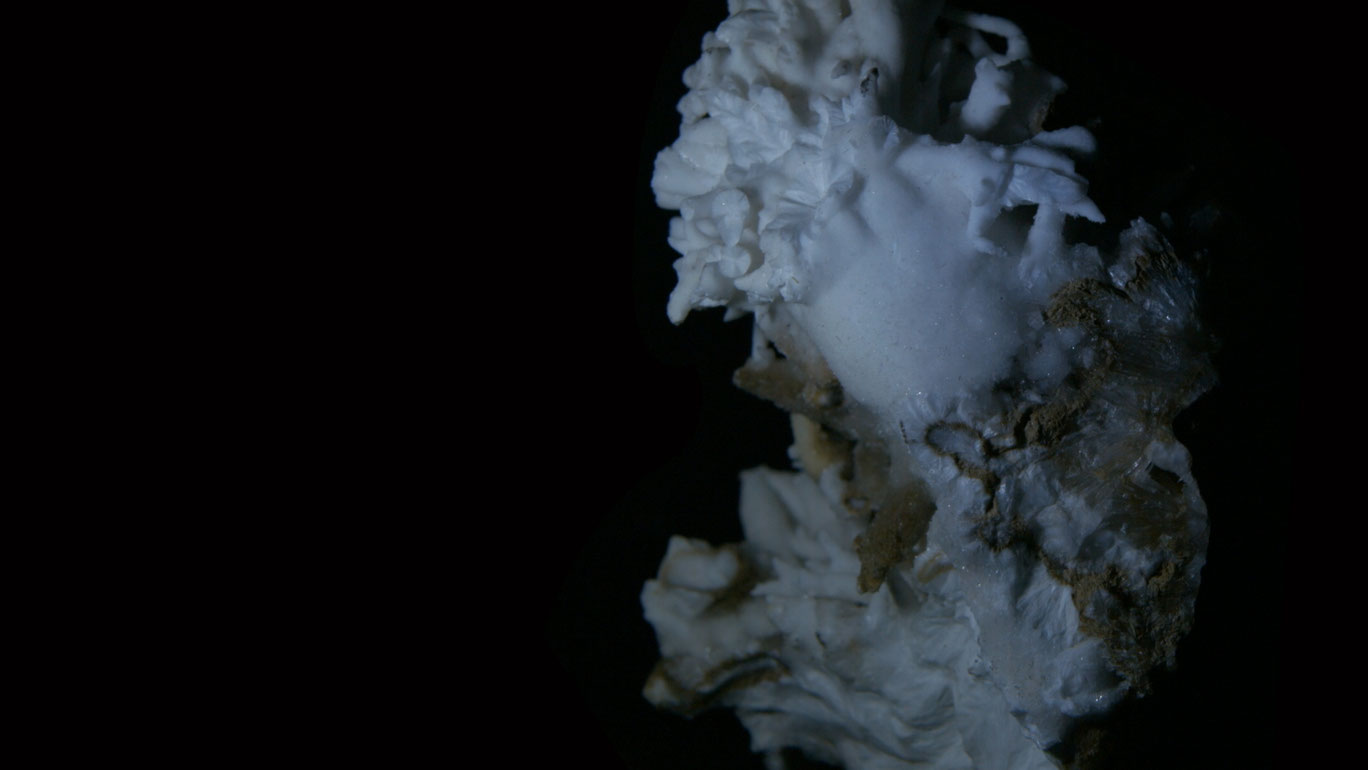ORE
Claudia Larcher frequently deals with architecture in her works. For example, she cuts catchy building parts out of photographs and combines them into multi-perspective collages in different media. In ORE, on the contrary, she falls back on natural formations. The video animation is an unbroken diagonal tracking shot. At the start, what one is being offered to look at isn´t clear. An irregular, crystalline relief in various tones of brown under a tender layer of clouds moves past the viewer. For lack of scale, the eye becomes lost in the abstract forms. Gradually, details surface that make it possible to guess that it is an aerial view of mountain ranges. Buildings and streets become recognizable. Without cuts, the landscape transforms noticeably, traces of mining ostentatiously appear. The transition between outdoors and indoors occurs seamlessly. Viewers suddenly find themselves again in a dark, cavernous labyrinth that is only partially illuminated by the lamps of moving flashlights. One becomes increasingly lost in the darkness and the films ends in black.
The soundtrack for the animation is composed of metallic blows that are clearly of human origin. The leaden hammering on different metals occurs in an imprecise, dull rhythm, thereby contrasting the entirely uniform movement of the computer animation.
In a sophisticated collage technique, the artist composes a huge, coherent tableaux from photos and video recordings of different mines. With her artistic vocabulary, she impressively documents how greatly humans have intervened in the Alpine landscape. In this sense, Larcher´s work is documentary while at the same time, highly aesthetic and artificial. (Norbert Pfaffenbichler)
Translation: Lisa Rosenblatt
ORE
2018
Austria
6 min



